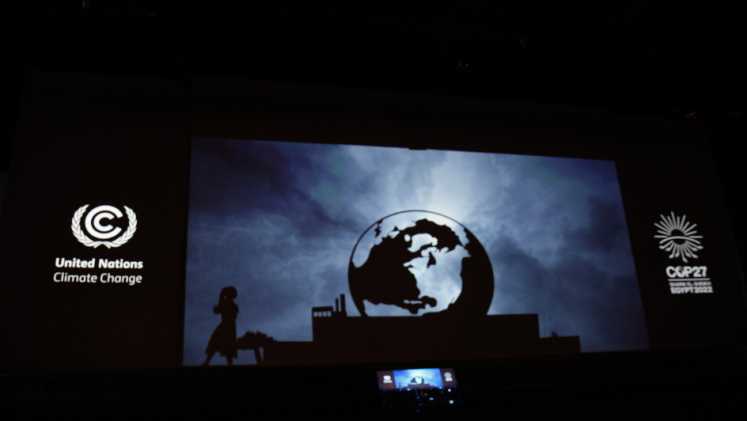Sharm El-Sheik, 9 November 2022 - In the past year alone, disasters caused the loss of around 10,000 human lives and over $280 billion in damages worldwide. Without drastic action, disasters like droughts, floods and storms will not only become more severe, but also occur more frequently, and their impacts will be felt everywhere. To keep global warming below the 1.5 degree limit, today’s greenhouse gas emissions will need to be cut by 45 per cent in the next eight years. This can only be achieved through unprecedented global shifts. Yet, climate action across the board is not nearly as ambitious as it needs to be.
“The science on climate change is clear, but both individual and governmental ambition is far from being sufficient,” states Prof. Shen, Xiaomeng, Director of United Nations University – Institute for Environment and Security (UNU-EHS), a UN think thank on climate change and environmental risks, at the United Nations Climate Conference (COP27) in Egypt. “We need to make sure that the science not only reaches people’s minds, but also their hearts and that they feel empowered to take action in whichever way they can.
As part of its commitment to science communication, UNU-EHS publishes its annual flagship publication “Interconnected Disaster Risks”. Based on rigorous scientific analysis, the report translates scientific findings for general audiences and incorporate key elements of science communication and storytelling to enable people to connect the topics of disaster risk reduction and climate action through different access points. One example of this is a collaboration with the Art and Exhibition Hall of Germany, which is focused on the interaction of arts and science.
The United Nations Secretariat published a guide on “communicating climate change” which encourages UN bodies, influencers, content creators and the general public to follow a set of tips to creatively engage audiences and generate bottom-up momentum for ambitious climate action. “We have to think differently about how to communicate the facts and figures of climate change to mobilize action,” said Martina Donlon, Climate Lead at United Nations Department of Global Communications, “and this also means giving people the tools to effectively communicate – whether they are scientists, influencers or film makers for instance.”
Academy Award-winning filmmaker Dirk Wilutzky is one of these new actors. As part of the UNU-EHS Transformative Urban Coalitions project, he works alongside scientists and local actors to inspire people to change their attitudes and behaviours towards de-carbonization in cities.
“I am not only a filmmaker, but also a father to two wonderful children and my biggest wish is that they will be able to enjoy their existence in the future. But at the moment it does not look like this is going to be possible. Our situation has become so dramatically urgent now, that we all have the responsibility, whether we want it or not, to use these last remaining years to do whatever we can, to avoid catastrophic climate change impacts. Every gram of CO2 counts. And every gram of influence which we have, counts. The films that my partner Mathilde Bonnefoy and I are making shall touch people with their honesty, their directness, their alarming personal messages - and their hope. If we now all do what is needed to avoid more than 1.5 Celsius of warming - we still have a chance to create a true paradise: Just, healthy, peaceful – and full of solidarity and meaning.”
###
For more information or to arrange an interview, please contact:
Janine Kandel (at COP27 in Egypt)
Head of Communication
United Nations University
Institute for Environment and Human Security
Phone: + 49 151 2672 1390 (mobile)
press@ehs.unu.edu
www.ehs.unu.edu



